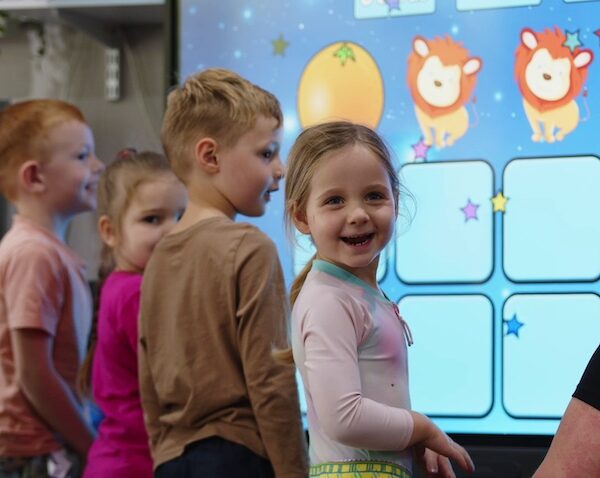Growing blue light exposure poses real risk to children’s eye health – How can ECEC services help in this vital area?

The advent of the COVID-19 outbreak in 2020 precipitated an unprecedented change in how, (and how often), children engaged with handheld digital devices as education settings adapted to lock down protocols and children found themselves spending an increased amount of time indoors.
Three years on from the pandemic fortunately children are back in early learning settings but sadly the usage patterns for many children when it comes to digital devices, particularly on the home front, is still very much intact.
“Many parents of pre-school and school age children have not recognised the risks of excessive smartphone and display usage¹,” Eyesafe Vision Health Advisory Board member and leading ophthalmologist Dr Dagny Zhu said.
“In the past screen, time for children was discretionary, largely up to the judgment and control of parents. That is no longer the case in a post pandemic world. At an increasingly younger age children are compelled to study, socialise and entertain themselves with these devices with pandemic restrictions making this the norm.”
Eye care professionals remain concerned at the increase in eye related damage cases that pass through their surgeries amidst a growing body of evidence that singles out blue light as a key area of concern for young children.
Understanding blue light – Where does it come from and what does it do?
Throughout the day our eyes are constantly picking up specific spectrums of light in the form of colours that are commonly known as visible light. Visible light consists of all of the different colours of the rainbow but also, importantly, contains different levels of intensity across the spectrum.
The higher the intensity, the higher the degree of damage that this portion of visible light can do to a human’s eyes.
At the extreme end of this range is what is known as high energy visible blue light, a particularly potent wavelength that is known, when at excessive levels, to damage the cells of both the cornea and retina of the eye.
Fast forward to today and almost 100 per cent of all laptops, tablets and handheld devices screens contain special light emitting technologies called LEDs and OLEDs that seek to replicate natural visible light but unfortunately, when it comes to damaging blue light, amplifies it.
This amplification of blue light through and the damage it can cause to eyes is particularly evident in young children who have not yet benefited from the natural maturing of their lenses meaning that more than 65 per cent of blue light can be transmitted to the back of their eyes independent studies have shown.
What can early learning services do to limit children’s blue light exposure?
Early childhood education and care (ECEC) services play an essential part in the care and education of young children across Australia and in so doing can, via the application of best practice activities, help mitigate the potentially negative health and wellbeing outcomes of excessive blue light exposure on their behalf.
Interactive display panel manufacturer BenQ has incorporated “low blue light” technology in its suite of products since 2012 and remains a leader in the space with its BenQ Board Pro RP03 showcasing the very latest eye-friendly touch screen technology that is also fully certified by TÜV and Eyesafe® with blue light protection for both children and educators.
“Given children attending early learning services can be there for up to eight hours a day, it is inevitable that at some stage they will come into contact with some form of digital device as part of their daily activities,” Jonathan Lee, Business Manager for Interactive Display ANZ at BenQ said.
“BenQ has worked very hard to pioneer educational display technology over the last decade that helps to strip out the harmful blue light emissions that are very present in all types of handheld and large format LCD devices. Our partnership with Eyesafe in 2022 has solidified this.”
“In the digital age there is no limit to how much attention we must invest in our child’s health and well being and we are thrilled we can not only contribute to better learning outcomes via our BenQ boards, but health and well being outcomes too.”
To learn more about how BenQ’s innovative range of products and services can support your early learning service to lessen the impact of blue light exposure to children and educators, visit BenQ for Early Learning Education here.
¹ How to Save Your Eyes in the Digital Age (Page 76)
Popular

Quality
Practice
Research
Professional bravery in ECEC: How reading the nervous system prevents behaviour escalation
2025-12-02 07:30:47
by Fiona Alston

Policy
Quality
Practice
Provider
Research
Workforce
ECEC services to close early for mandatory child safety training under national reforms
2025-12-01 07:10:09
by Fiona Alston

Quality
Policy
Practice
Provider
Workforce
Growth restrictions and enhanced oversight imposed on Affinity Education Group in NSW
2025-12-01 07:30:29
by Fiona Alston

















